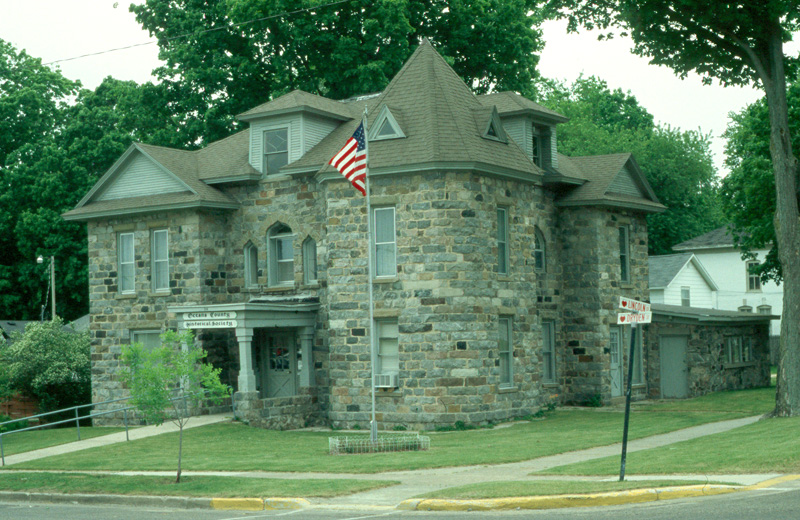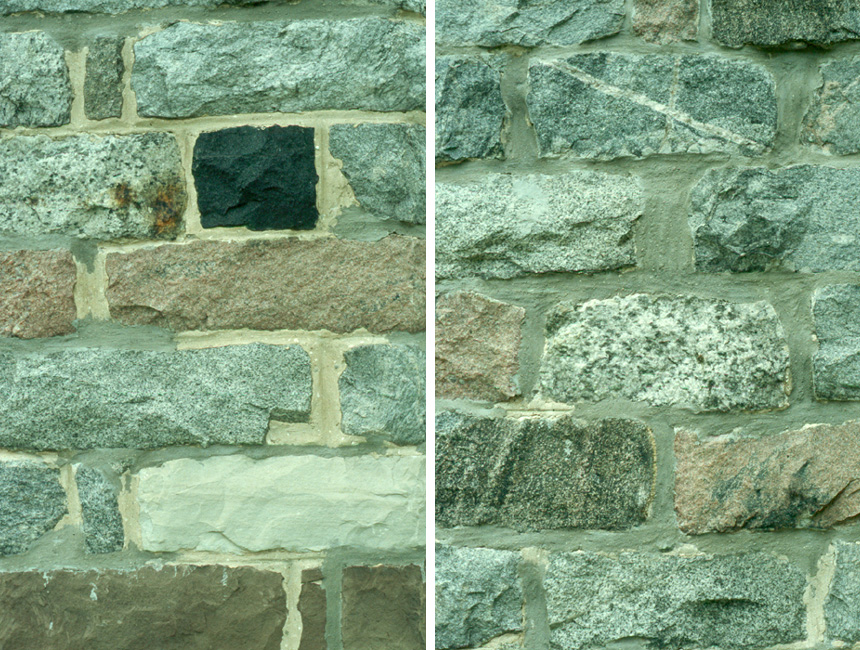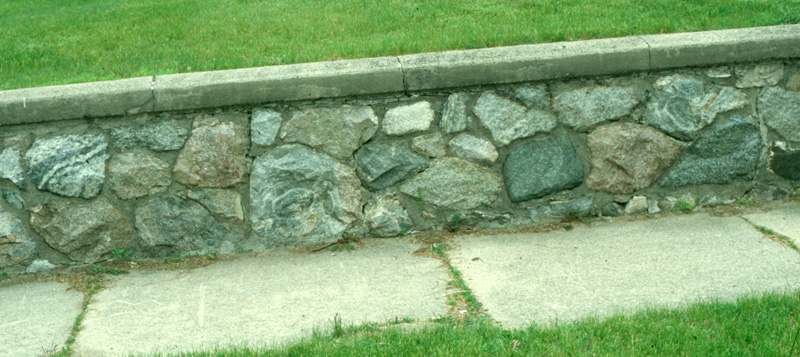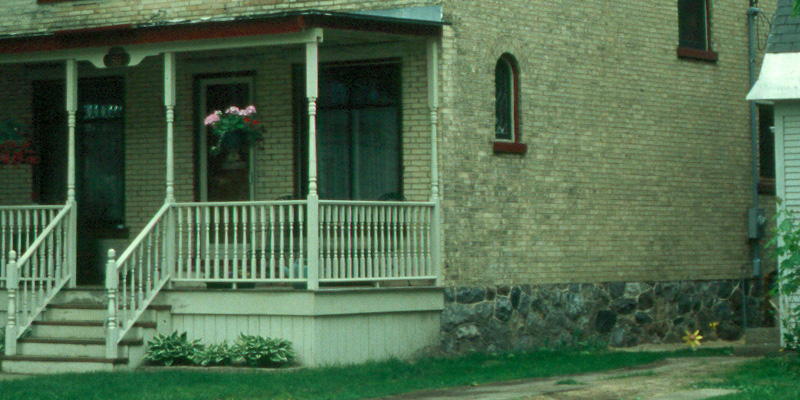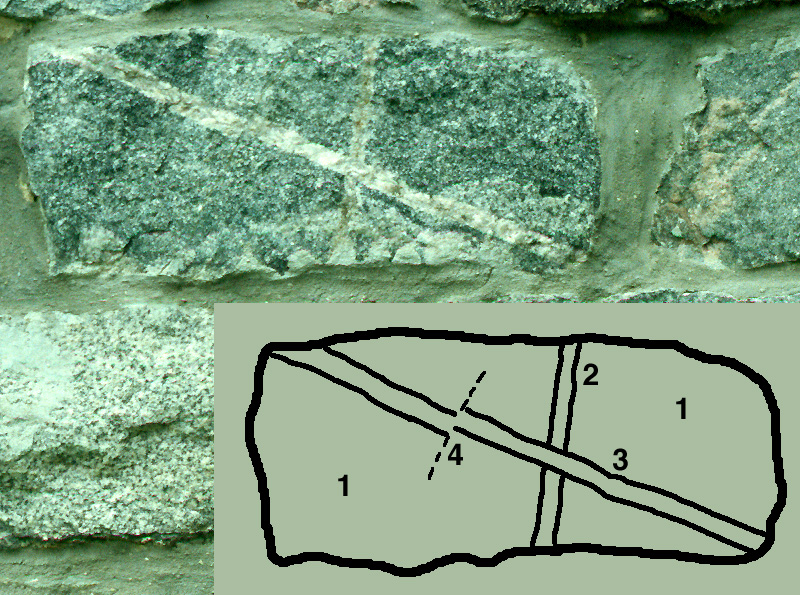|
This building is the Chadwick-Munger House, the home of the Oceana County Historical Society in Hart, Michigan. It was built in the late 1800s as the home of Harvey Jenner Chadwick, a physician and druggist, and later was the home of L.P. Munger, a physician and fruit-grower. Late still, it stayed in the medical field as the offices of the local Health Department. It's now the home of the Oceana County Historical and Genealogical Society.
The house is built of a diverse assortment of rock types almost certainly derived from glacial deposits typical of western Michigan. The sedimentary rocks were probably eroded by glaciers from the bedrock of Michigan, but the igneous and metamorphic rocks have to have come from the Canadian Shield farther north. This sort of pastiche of building stones is not uncommon in glaciated areas, as at least one other example in this collection shows.
What is unusual is that the stones were hewn to give the regular flat blocks shown in the image below. The sedimentary rocks (like those at the lower left in the image below) are not particularly hard and so should not have been a problem to hammer into shape. The igneous and metamorphic rocks (all the rocks in the right panel) are, on the other hand, very difficult to break, and so preparing this stone was a great deal of work. It's much more common to see hard rocks recovered from local tills used unbroken, as in the retaining wall and foundation shown farther below and found within a city block or so of the house above.
|
| One stone toward the top right of the second image above is particularly interesting, and it's shown again in the image below. It's a dark rock (1) containing two cross-cutting white veins (2 and 3), one of which is displaced along a very small-scale fault (4). This block is a nice example of cross-cutting relationships that allow one to construct a history of geologic events. The dark mass (1) formed first and was later intruded by the vertical vein (2). Later, a second vein was intruded across both 1 and 2. Later still, stress on the rock caused displacement along a very small fault (4 - hardly a fault at all at the scale usually of interest to geologists), so that there's now a jog in Vein 3.
|
| All of this probably happened somewhere in the Canadian Shield billions of years ago. Much more recently, in the last few hundred thousand years, flowing ice eroded this block of rock and carried it to west-central Michigan. Much much more recently, the rock was picked from its glacial till, hammered to yield a rectangular block, and mortared into a wall. That's quite a history, and thus it's appropriate for a stone in the walls of the Oceana County Historical Society.
|
